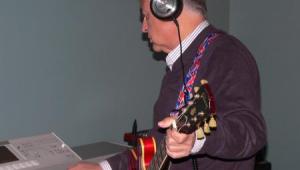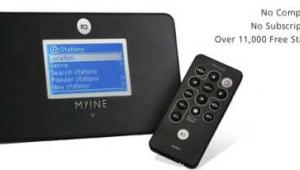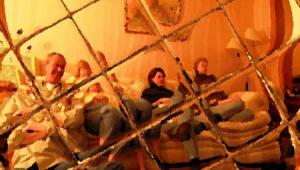"Er, no, actually, you're watching them . . . ."
What are we talking about here? Spaceway 1 and Spaceway 2 satellites, Directv's latest plot to take over the world and make cable operators wish their mothers were never born. A year and a half ago, Directv promised these birds would be up in space beaming 500 local HD channels your way sometime in 2005. According to my trusty Dick Tracy watch, times up. So, how did they do?
They didn't make it. While Spaceway 1 went up in late April 2005 and Spaceway 2 joined it a squeaky six weeks before the end of the year, Directv was still not providing new coverage for their customers before the ball dropped in Time Square. In good Orwellian fashion, Directv may have expunged all traces of their optimistic pronouncements of September 2004 from their own web site (along with, thankfully, the clothes washers communicating with space commercials that were such a bore), but they still don't control the Daily Wireless whose contemporaneous reporting about last April's launch of Spaceway 1 indicates the summer of 2005 was Directv's target for that bird going into service. And by service, one would presume they meant serving their customer's needs.
"After a checkout period, Spaceway 1 will go into service this summer to begin DIRECTV's new initiative to transmit more than 1,500 national and local high-definition channels, the Daily Wireless reported last April 2005. Hmmm. Very Clintonesque – I suppose that could go either way.
So where do we stand today? Directv has moved the ball down the field, to the second half of 2006, so far as (re)committing to when we would actually see the fruits of their labor. At CES 2006 in January, they announced the first twelve markets to be served. Okay boys and girls. Are we one of the lucky ones? Well, only if "we" live in New York, Los Angeles, Chicago, Philadelphia, Boston, San Francisco, Dallas, Washington D.C., Atlanta, Detroit, Houston or Tampa. Besides the obvious similarity with a Huey Lewis song (or a Howard Dean mayorial run), what does this tell you? Well, if you're reading my blog, it stands to reason you have nothing better to do, and if you have nothing better to do, it further stands to reason that you don't live in New York, Los Angeles, Chicago, Philadelphia, Boston, San Francisco, Dallas, Washington D.C., Atlanta, Detroit, Houston or Tampa. In other words dear, loyal readers, we're still standing outside banging on the door screaming Wilma while Dino chews on our slippers.
But you can't blame Directv for making a good business decision. Their research says there are 36 million "TV" homes in the twelve target markets. Of course, those homes don't all actually subscribe to Directv, but there's nothing like puffing yourself up statistically when you want to sound like a player. In fact, in the densest parts of those markets, hanging a dish on your high rise isn't going to work out, particularly if you don't have an unobstructed view to the southern sky. Yet these dozen heavily populated metropolitan areas represent the best bang for Directv's buck as calculated by their marketing wing. My market, Connecticut, also falls under their wing, but closer to the armpit. It will be a cold day in space, or at least a cold day in 2007 or 2008, before our stretch of dirt gets a local HD feed. How will they do it?
Directv's plans to launch two more satellites which, breaking with that most creative of creative traditions, sequential numbering, will be named Directv 10 and Directv 11. I know what you're thinking. 10 in binary means 2 in English, so should we lie awake at night worrying that some new Directv trainee accidentally will send satellite positioning instructions to both Spaceway 2 and Directv 10 resulting in a mid-air collision during the season finale of 24 ? Probably not, but 10 and 11 (or as everyone less bisiliconilingual calls them, 3 and 4) are the FEMA equivalent of double-wides, giving Directv an additional 1000 channels of local HD broadcasting capability as well as up to 150 more national HD stations. It's that last bit of information that is most important to us.
Why? Because, frankly, I don't care if I ever see our local weather forecaster in Hi-Def, or even in person. The 11 o'clock local new is still going to be shot with same cameras our local NBC affiliate has used since peacocks were thought to be a sign of good breeding. If we could have amicably settled the matter of not having to broadcast Prison Break on 130 different channels just so everyone can see that the local Ford dealer is having a sale on F-150s, then Directv customers would already be receiving the big 4 in HD.
So returning to that little developed, slightly subliminal portion of the ongoing Directv announcements, those 150 national HD stations are what interests me the most. Since the death of VOOM, the pursuit of anything HD outside the beaten path of network television has been a slow go. Directv's plans have got me all jazzed up. Leaving aside the fact that finding 150 more stations whose programming is worthy of producing in HD is at least as Herculean a task as launching the satellite on which said programming will be shown, the folks at Directv understand what their customers want better than the cable companies ever did.
Of course, there's another catch. I mean, besides all the other ones. You'll need to buy new MPEG-4 capable set top boxes from Directv before you can watch any of the new programming. While this sounds like it's going to be a big deal, it's really not. You can always keep watching the half dozen HD stations being broadcast now in MPEG-2 on their existing transponders and just wait until Directv starts offering incentives to switch. But even if you're like me and can't wait, we're so early in the HD curve still, most folks only have one HD set top box that will need replacing. Admit it. You'll be plunking down your moolah as soon as you find out that FX's The Shield or USA Network's Monk are available in HD. At least, I know I will.
In the meantime, those of you who live in the Red States can still buy and install the biggest, hairiest, Yagi antenna you can find (see Size Matters), hook it to your HD set top box and watch all the uncompressed HD broadcasts that come over the air from your local affiliate at no charge.
"I want a new drug. . . . "
- Log in or register to post comments





























































